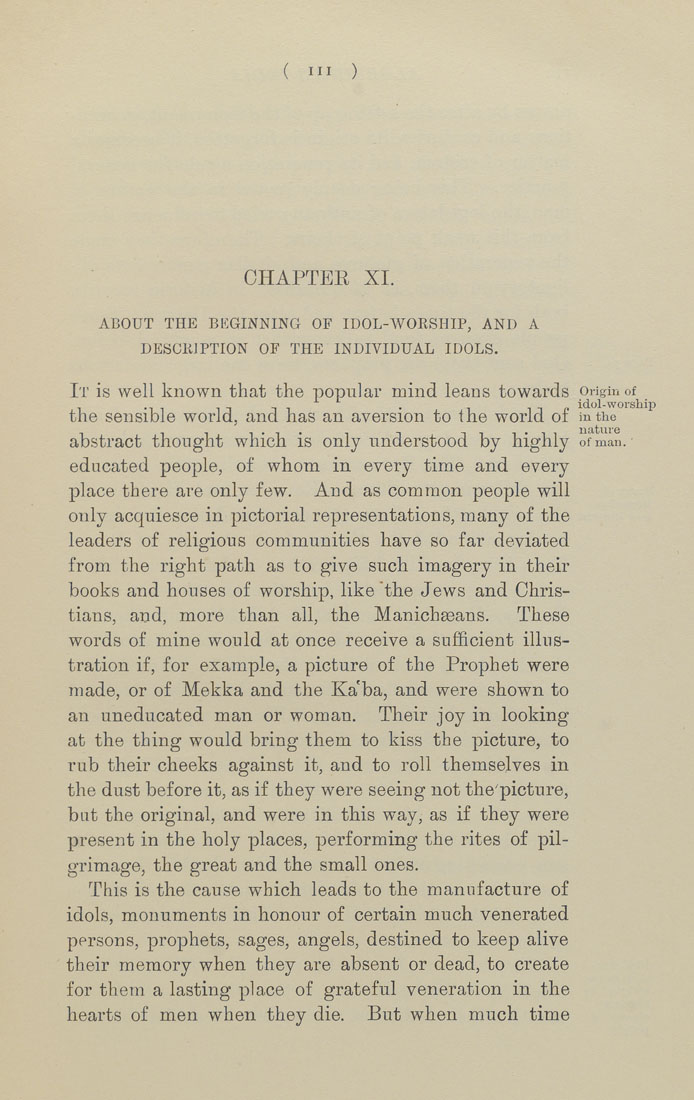Bīrūnī, Muḥammad ibn Aḥmad, Alberuni's India (v. 1)
(London : Kegan Paul, Trench, Trübner & Co., 1910.)
|
||
|
|
|
|
| Page 111 |

( III ) CHAPTER XI. ABOUT THE BEGINNING OF IDOL-WORSHIP, AND A DESCRIPTION OF THE INDIVIDUAL IDOLS. It is well known that the popular mind leans towards origin of 1 -11 1-1 -11 • 1 1-if idol-worship the sensible world, and has an aversion to the world ot in the abstract thought which is only understood by highly of man. educated people, of whom in every time and every place there are only few. And as common people will only acquiesce in pictorial representations, many of the leaders of religious communities have so far deviated from the right path as to give such imagery in their books and houses of worship, like "the Jews and Chris¬ tians, and, more than all, the Manichseans. These words of mine would at once receive a sufficient illus¬ tration if, for example, a picture of the Prophet were made, or of Mekka and the Ka'ba, and were shown to an uneducated man or woman. Their joy in looking at the thing would bring them to kiss the picture, to rub their cheeks against it, and to roll themselves in the dust before it, as if they were seeing not the'picture, but the original, and were in this way, as if they were present in the holy places, performing the rites of pil¬ grimage, the great and the small ones. This is the cause which leads to the manufacture of idols, monuments in honour of certain much venerated persons, prophets, sages, angels, destined to keep alive their memory when they are absent or dead, to create for them a lasting place of grateful veneration in the hearts of men when they die. But when much time |
| Page 111 |







